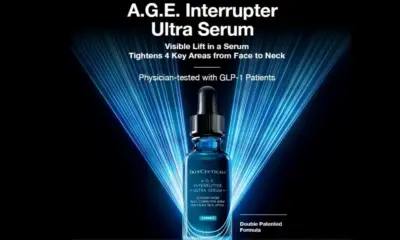Hair Care
Scientists Apply Machine Learning to Estimate Hair Density

Scientists in Taiwan have utilized machine learning to revolutionize hair density estimation. A study published in the International Journal of Cosmetic Science highlights how algorithm-based estimation can improve the accuracy and efficiency of the process, providing a more objective approach for specialists.
Scientists Apply Machine Learning to Estimate Hair Density, a method that could streamline clinical hair analysis by focusing on scalp coverage and erosion features. This innovative approach offers a more reliable and time-efficient solution compared to traditional manual techniques.
Hair density refers to the number of hairs per square centimeter on a person’s scalp. On average, humans have between 150 and 233 hairs per square centimeter, with men typically experiencing lower hair density than women, and being more prone to hair loss. Those concerned with hair thinning, hair loss, or those considering hair transplants often seek specialists who perform hair density estimates to guide treatment decisions.
Traditionally, estimating hair density required manually counting each hair within a square centimeter, a method that is not only time-consuming but can also be inaccurate due to variations in hair density across different regions of the scalp. To improve accuracy, specialists often rely on close-up images, videos, and computer software, with digital hair scanners becoming more common. Scientists Apply Machine Learning to Estimate Hair Density by training algorithms on large datasets, allowing these systems to predict hair density with greater precision after uploading a photo or image.
In this groundbreaking study, researchers used an open-source machine learning tool called XGBoost to estimate hair density. XGBoost is an ensemble learning algorithm that combines multiple models to correct errors and enhance prediction accuracy, even when working with less data. The researchers trained the model using a dataset of nearly 750 scalp images and then tested its performance on an additional 150 images.
The results showed that the XGBoost hair model achieved an impressive 95% accuracy in predicting hair density from test images, Scientists Apply Machine Learning to Estimate Hair Density, outperforming previous studies that used neural networks for similar tasks. This breakthrough tool offers a significant leap forward in hair density estimation, making it the most accurate machine learning model available.
Solutions to combat hair loss and thinning have seen increasing demand, with consumers continuously searching for effective treatments. Recent launches in the hair care market, such as Vegamour’s Gro+ Advanced System, target severe shedding and hair loss, while Aveda’s vegan, multi-step collection promises to enhance hair density. Vytrus Biotech has also introduced Capilia Longa, an ingredient derived from turmeric stem cells, to help reactivate hair follicles and stimulate hair growth.
However, not all hair loss solutions are universally accepted. Methods like red light therapy have generated skepticism due to insufficient evidence supporting their effectiveness in regrowing hair. Personal Care Insights has interviewed experts who question the validity of some popular beauty trends, including the claims surrounding red light therapy.
With machine learning now playing a key role in hair density estimation, the future of hair health looks promising, offering more accurate and efficient methods for both specialists and consumers alike.





















